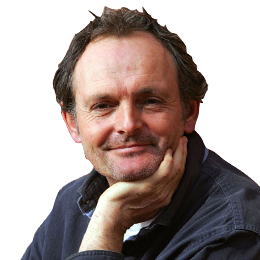HEADING FOR THE HILLS
THE FIERY TRUTH
The thirsty fledgling blackbird sitting on my water bucket finally plucks up the courage to fly, just in the nick of time as the two farm cats home in on it. It instinctively heads from the shade of the fig tree to the higher branches of the pines to the south and I watch it settle beyond reach of feline claws. Hoopoes, golden orioles, swifts, swallows, bee eaters and others fill the morning air with their music and calls.
My eyes look further and up, through the building heat haze to the beguiling, protected natural cliffs, peaks and forest of the Serra de Llaberia. My smile slides from my face. It will be nearing 40 degrees in a few hours. Hot air will once again come barrelling down the valley, devoid of humidity. Everywhere is already tinder dry.
“Dwell in possibility” is one of my positive mantras to family and friends. This is different. At times like these we have an overwhelming sense of inevitability.
The massif has had its fair share of wildfires, including one six kilometres east of our farm at the end of the valley, but not in our two decades here have the stunning features of cliff and crowded green in front of us and which we appreciate so much been turned to ash. When it is baking and blowing like this I can’t help wondering when not if.
A lightning strike more than 10 years ago hit a tree just out of sight up beyond the lip of the ridge. The storm passed, the core of the tree smouldered and then, a few clear days later, the trunk toppled. Whoosh. The fire crews and helicopters were on it within minutes. We and the village were saved from what could have been a desperate ordeal. As I write, the brave frontline fighters are out there again, the other side of the community, damping down having to tackle another blaze deep in a dense, highly combustible gully. So much – lives, livelihoods, Mother Nature and all she encapsulates and sustains – are increasingly on the line across the world. Catalonia, so dense with growth, a lung, is no exception.
Birds can flee, perhaps boar, deer, foxes etc. can outrun a blaze if it is not fanned, but the salamanders, the frogs, snakes, lizards, rodents, red squirrels, tortoises, insects - the plethora of rarely seen, vital life, cannot. Perhaps the trees and other growth will regenerate. They should. Fire is part of the cycle of life. But portents regarding the increasing intensity and frequency with the onset of climate upheaval begin to eat into hope. We have to change, to learn, and we can.
Ecologists have for some time now understood how important fire is to the natural patterns of ecosystems. This “fire regime” serves to uphold health, despite the initial gross and depressive scarring of the terrain. It is a reset. Root systems store nutrients and can survive, seeds need fire to end their dormancy and after the cleansing the glorious cycle can begin again... unless the blazes are unnaturally severe. Forests that are adapted to fires can be destroyed. And I have not mentioned, of course, how this ferocity, fuelled by heightening temperatures, can and will break past patterns and increasingly threaten human life in the years ahead. Don’t we already know it?
If the data are to be believed, more than half the wild fires in Catalonia are caused by human error. In an invaluable nutshell we have a fact that defines our fundamental collective responsibility in the face of this growing threat to our environment, and to the people who put their lives on the line to protect us and our homes. I thank them.
Take great care during what is left of this blistering year, whatever the season.


